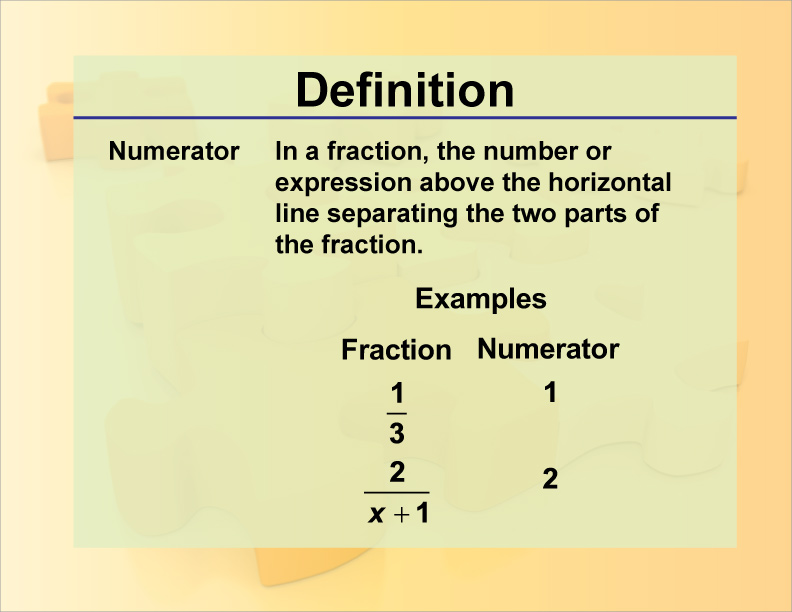
Display Title
Definition--Numerator
Display Title
Numerator

Topic
Fractions
Definition
A numerator is the part of a fraction that is above the line and signifies the number of parts being considered out of the whole.
Description
In the realm of fractions, the numerator plays a crucial role. It is the top number in a fraction and indicates how many parts of the whole are being counted. For example, in the fraction 3/4, the numerator is 3, which means three parts out of a total of four equal parts are being considered. Understanding the numerator is essential in grasping the concept of fractions, as it directly impacts the value and interpretation of the fraction.
Fractions are used to represent parts of a whole in various contexts, from dividing a pizza into slices to measuring ingredients for a recipe. The numerator helps to specify the exact portion being referred to. For instance, if a recipe calls for 3/4 cup of sugar, the numerator (3) tells us that three parts out of four equal parts of a cup are needed. This concept is fundamental in both everyday situations and more complex mathematical problems.
For a complete collection of terms related to fractions, click on this link: Fractions Collection.
| Common Core Standards | CCSS.MATH.CONTENT.3.NF.A.3.D |
|---|---|
| Grade Range | 6 - 12 |
| Curriculum Nodes |
Arithmetic • Fractions • Fractions and Mixed Numbers |
| Copyright Year | 2014 |
| Keywords | definition, numerator |